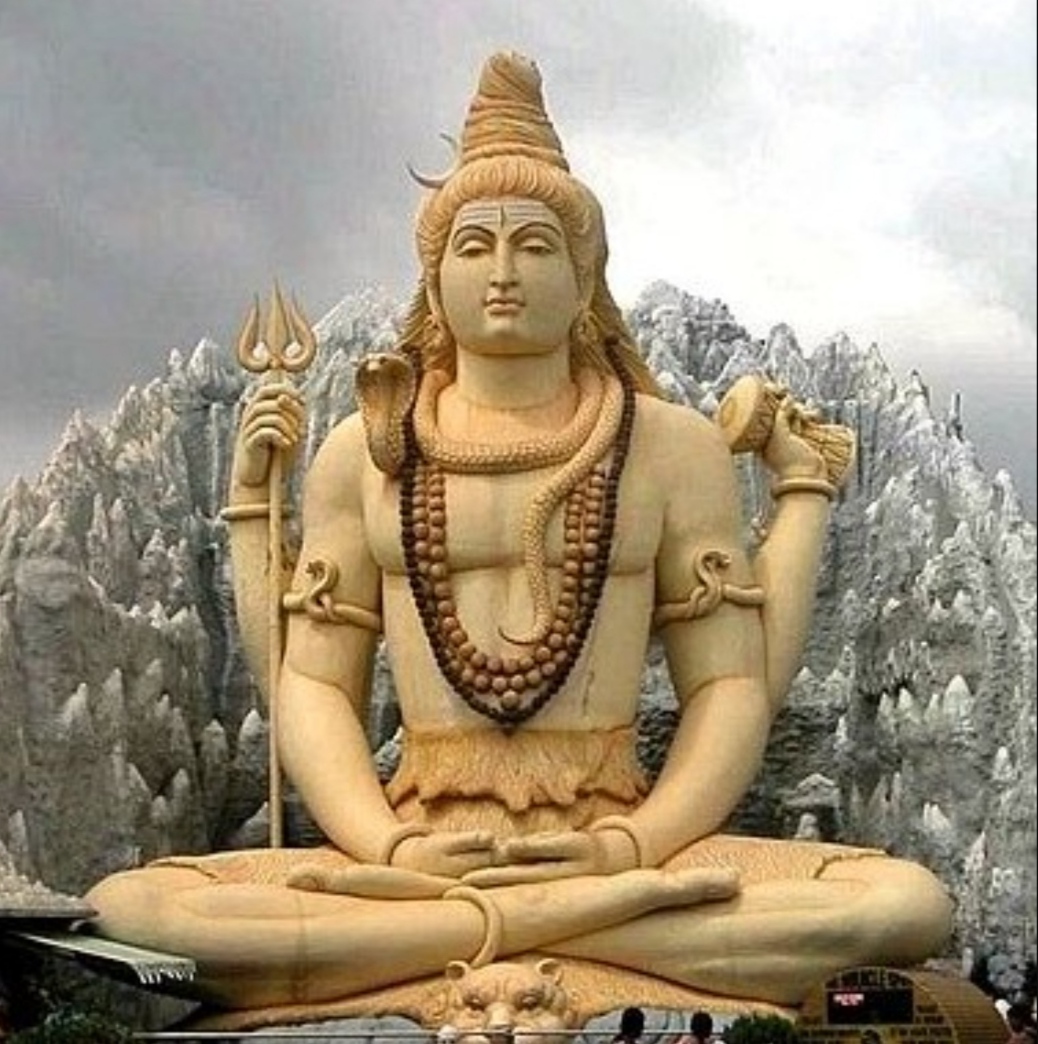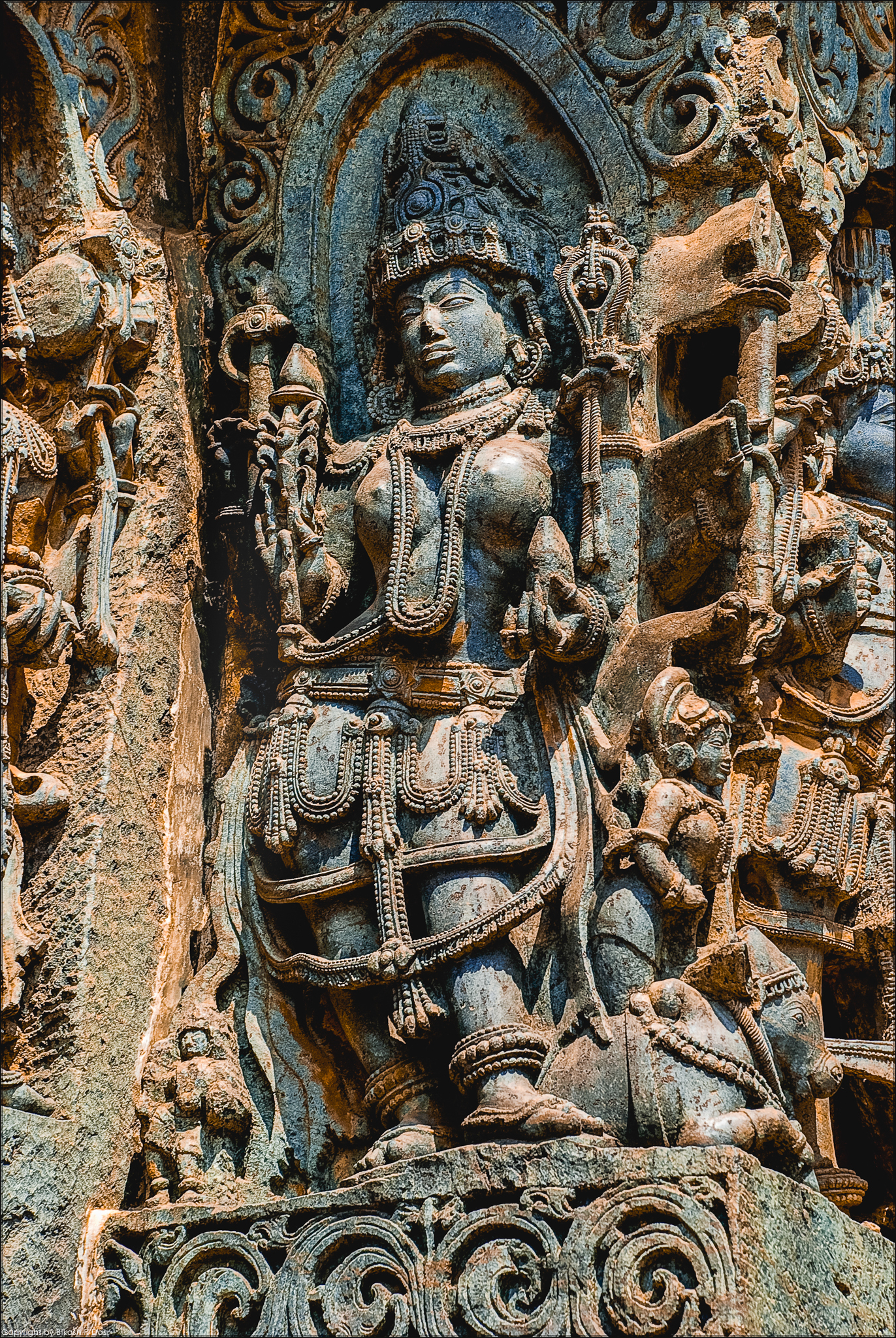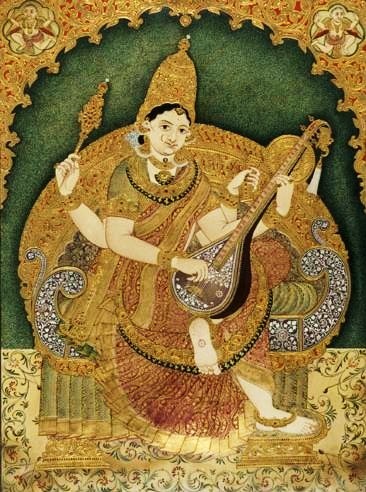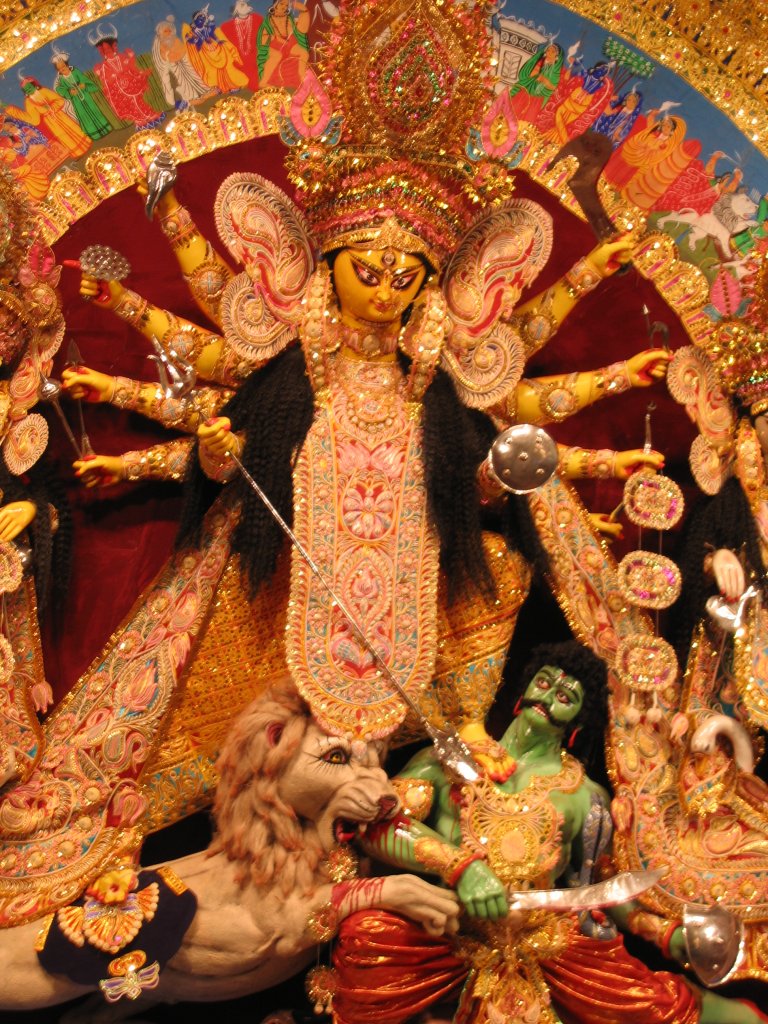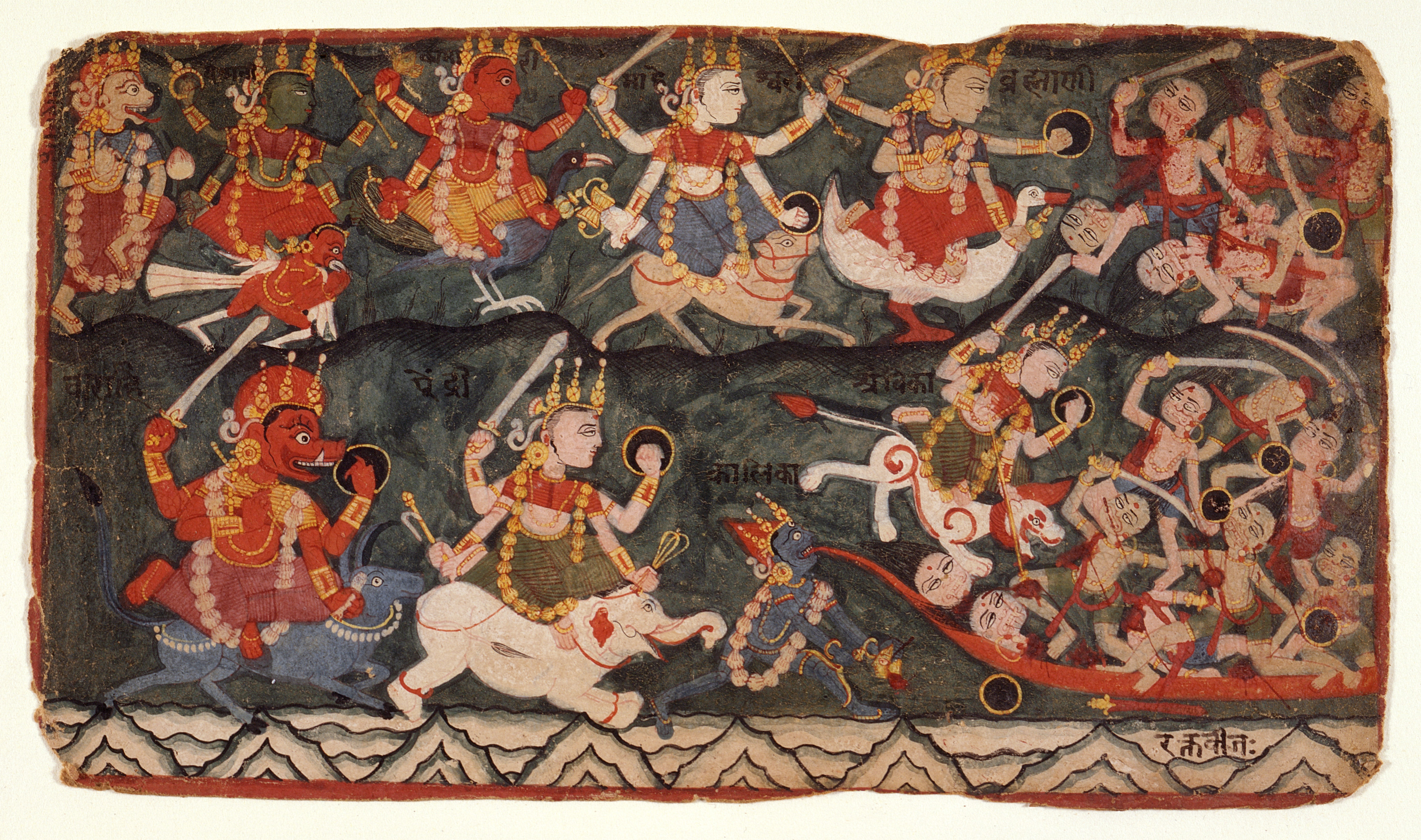|
Shaktism
Shaktism () is a major Hindu denomination in which the God in Hinduism, deity or metaphysics, metaphysical reality is considered metaphorically to be a woman. Shaktism involves a galaxy of goddesses, all regarded as different aspects, manifestations, or personifications of the divine feminine energy called ''Shakti''. It includes various modes of worship, ranging from those focused on the most worshipped Durga, to gracious Parvati, and the fierce Kali. After the decline of Buddhism in India, various Hindu and Buddhist goddesses were combined to form the Mahavidya, a Pantheon (religion), pantheon of ten goddesses. The most common forms of the Mahadevi worshipped in Shaktism include: Durga, Kali, Saraswati, Lakshmi, Parvati, and Tripura Sundari. Also worshipped are the various Gramadevatas across the Indian villages. Shaktism also encompasses various Tantra#Śaiva and Śākta tantra, tantric sub-traditions, including Vidyapitha and Kulamārga. Shaktism emphasizes that intense ... [...More Info...] [...Related Items...] OR: [Wikipedia] [Google] [Baidu] |
Hindu Denomination
Hindu denominations, ''sampradayas'', traditions, movements, and sects are traditions and sub-traditions within Hinduism centered on one or more gods or goddesses, such as Vishnu, Shiva, Shakti and so on. The term ''sampradaya'' is used for branches with a particular founder-guru with a particular philosophy. Hinduism has no central doctrinal authority and many practising Hindus do not claim to belong to any particular denomination or tradition. Four major traditions are, however, used in scholarly studies: ''Vaishnavism'', ''Shaivism'', ''Shaktism'' and ''Smartism''.Lance Nelson (2007), An Introductory Dictionary of Theology and Religious Studies (Editors: Orlando O. Espín, James B. Nickoloff), Liturgical Press, , pages 562–563 These are sometimes referred to as the denominations of Hinduism, and they differ in the primary deity at the centre of each tradition.SS Kumar (2010), Bhakti — the Yoga of Love, LIT Verlag Münster, , pp. 35–36. A notable feature of Hindu denom ... [...More Info...] [...Related Items...] OR: [Wikipedia] [Google] [Baidu] |
Shaivism
Shaivism (, , ) is one of the major Hindu denominations, Hindu traditions, which worships Shiva as the Para Brahman, supreme being. It is the Hinduism#Demographics, second-largest Hindu sect after Vaishnavism, constituting about 385 million Hindus, found widely across South Asia (predominantly in South India, Southern India), Sri Lanka, and Nepal.Keay, p.xxvii. The followers of Shaivism are called Shaivas or Shaivites. According to Chakravarti, Shaivism developed as an amalgam of pre-Aryan religions and traditions, Vedic Rudra, and post-Vedic traditions, accommodating local traditions and Yoga, puja and bhakti. According to Bisschop, early shaivism is rooted in the worship of vedic deity Rudra. The earliest evidence for sectarian Rudra-Shiva worship appears with the Pasupata (early CE), possibly owing to the Origins of Hinduism, Hindu synthesis, when many local traditions were aligned with the Brahmanism, Vedic-Brahmanical fold. The Pāśupata movement rapidly expanded through ... [...More Info...] [...Related Items...] OR: [Wikipedia] [Google] [Baidu] |
Hinduism
Hinduism () is an Hypernymy and hyponymy, umbrella term for a range of Indian religions, Indian List of religions and spiritual traditions#Indian religions, religious and spiritual traditions (Sampradaya, ''sampradaya''s) that are unified by adherence to the concept of ''dharma'', a Ṛta, cosmic order maintained by its followers through rituals and righteous living, as expounded in the Vedas. The word ''Hindu'' is an exonym, and while Hinduism has been called the oldest religion in the world, it has also been described by the modern term ''Sanātana Dharma'' () emphasizing its eternal nature. ''Vaidika Dharma'' () and ''Arya dharma'' are historical endonyms for Hinduism. Hinduism entails diverse systems of thought, marked by a range of shared Glossary of Hinduism terms, concepts that discuss God in Hinduism, theology, Hindu mythology, mythology, among other topics in Hindu texts, textual sources. Hindu texts have been classified into Śruti () and Smṛti (). The major Hin ... [...More Info...] [...Related Items...] OR: [Wikipedia] [Google] [Baidu] |
Shakti
Shakti (Devanagari: शक्ति, IAST: Śakti; 'energy, ability, strength, effort, power, might, capability') in Hinduism, is the "Universal Power" that underlies and sustains all existence. Conceived as feminine in essence, Shakti refers to the personified energy or power of a Deva (Hinduism), male deity, often personified as the female consort of the given Hindu god. In Tantric Shaktism, Shakti is the foremost deity, akin to Brahman. In Puranic Hinduism, Shiva and Shakti are the masculine and feminine principles that are complementary to each other. The male deity is ''purusha'', pure consciousness, which creates the universe through the female creative energy of Shakti, which is ''Prakṛti, prakriti'', 'nature'. The term ''Shakta'' is used for the description of people associated with Shakti worship. The Shakta pithas are shrines, which are believed to be the sacred seats of Shakti. Etymology and overview According to the Monier Monier-Williams, Monier-Williams dict ... [...More Info...] [...Related Items...] OR: [Wikipedia] [Google] [Baidu] |
Saraswati
Saraswati (, ), also spelled as Sarasvati, is one of the principal Devi, goddesses in Hinduism, revered as the goddess of knowledge, education, learning, arts, speech, poetry, music, purification, language and culture. Together with the goddesses Lakshmi and Parvati, she forms the trinity of chief goddesses, known as the Tridevi. Sarasvati is a pan-Indian deity, venerated not only in Hinduism but also in Jainism and Buddhism.Ludvik (2007), pp. 1, 11. She is one of the prominent goddesses in the Historical Vedic religion, Vedic tradition (1500 to 500 BCE) who retains her significance in later Hinduism. In the Vedas, her characteristics and attributes are closely connected with the Sarasvati River, making her one of the earliest examples of a Rivers in Hinduism, river goddess in Indian tradition. As a deity associated with a river, Sarasvati is revered for her dual abilities to purify and to nurture fertility. In later Vedic literature, particularly the Brahmanas, Sarasvati is i ... [...More Info...] [...Related Items...] OR: [Wikipedia] [Google] [Baidu] |
Mahadevi
Mahadevi (, , IPA: / mɐɦɑd̪eʋiː/), also referred to as Adi Parashakti, and Mahamaya, is the supreme goddess in Hinduism. According to the goddess-centric sect Shaktism, all Hindu gods and goddesses are considered to be manifestations of this great goddess, who is considered as the '' Para Brahman'' or the ultimate reality. Shaktas often worship her as Durga, also believing her to have many other forms. Mahadevi is mentioned as the ''Mulaprakriti'' (Primordial Goddess) in Shakta texts, having five primary forms—Parvati, Lakshmi, Sarasvati, Gayatri and Radha—collectively referred to as ''Panchaprakriti''. Besides these, Goddess Tripura Sundari, a form of Devi, is often identified with the supreme goddess Mahadevi in Shaktism. Author Helen T. Boursier says: "In Hindu philosophy, both Lakshmi (primary goddess in Vaishnavism) and Parvati (primary goddess of Shaivism) are identified as manifestations of this great goddess—Mahadevi—and the Shakti or divine power". ... [...More Info...] [...Related Items...] OR: [Wikipedia] [Google] [Baidu] |
Durga
Durga (, ) is a major Hindu goddess, worshipped as a principal aspect of the mother goddess Mahadevi. She is associated with protection, strength, motherhood, destruction, and wars. Durga's legend centres around combating evils and demonic forces that threaten peace, prosperity, and dharma, representing the power of good over evil. Durga is believed to unleash her divine wrath against the wicked for the liberation of the oppressed, and entails destruction to empower creation. Durga is seen as a motherly figure and often depicted as a beautiful woman, riding a lion or tiger, with many arms each carrying a weapon and often defeating demons. She is widely worshipped by the followers of the goddess-centric sect, Shaktism, and has importance in other denominations like Shaivism and Vaishnavism. The most important texts of Shaktism, Devi Mahatmya and Devi Bhagavata Purana, revere Devi (the Goddess) as the primordial creator of the universe and the Brahman (ultimate truth and reali ... [...More Info...] [...Related Items...] OR: [Wikipedia] [Google] [Baidu] |
Tantra
Tantra (; ) is an esoteric yogic tradition that developed on the India, Indian subcontinent beginning in the middle of the 1st millennium CE, first within Shaivism and later in Buddhism. The term ''tantra'', in the Greater India, Indian traditions, also means any systematic broadly applicable "text, theory, system, method, instrument, technique or practice". A key feature of these traditions is the use of mantras, and thus they are commonly referred to as Mantramārga ("Path of Mantra") in Hinduism or Mantrayāna ("Mantra Vehicle") and Guhyamantra ("Secret Mantra") in Buddhism. In Buddhism, the Vajrayana traditions are known for tantric ideas and practices, which are based on Indian Tantras (Buddhism), Buddhist Tantras. They include Tibetan Buddhism, Indo-Tibetan Buddhism, Chinese Esoteric Buddhism, Japanese Shingon Buddhism and Nepalese Newar Buddhism. Although Southern Esoteric Buddhism does not directly reference the tantras, its practices and ideas parallel them. In Bud ... [...More Info...] [...Related Items...] OR: [Wikipedia] [Google] [Baidu] |
Mahavidya
The ''Mahavidya'' (, , lit. ''Great Wisdoms'') are a group of ten Hindu Tantric goddesses. The ten Mahavidyas are usually named in the following sequence: Kali, Tara, Tripura Sundari, Bhuvaneshvari, Bhairavi, Chhinnamasta, Dhumavati, Bagalamukhi, Matangi and Kamalatmika. Nevertheless, the formation of this group encompass divergent and varied religious traditions that include ''yogini'' worship, Shaivism, Vaishnavism, and Vajrayana Buddhism. The development of the Mahavidyas represents an important turning point in the history of Shaktism as it marks the rise of the Bhakti aspect in Shaktism, which reached its zenith in 1700 CE. First sprung forth in the post-Puranic age, around 6th century CE, it was a new theistic movement in which the supreme being was envisioned as female. A fact epitomized by texts like ''Devi-Bhagavata Purana'', especially its last nine chapters (31–40) of the seventh ''skandha'', which are known as the ''Devi Gita'', and soon became central t ... [...More Info...] [...Related Items...] OR: [Wikipedia] [Google] [Baidu] |
Vaishnavi (Matrika Goddess)
Matrikas (Sanskrit: मातृका (singular), International Alphabet of Sanskrit Transliteration, IAST: mātṛkā, lit. "mothers") also called Mataras or Matri, are a group of mother Devi, goddesses in Hinduism. The Matrikas are often depicted in a group of seven, the Saptamatrika(s) (Seven Mothers). However, they are also depicted as a group of eight, the Ashtamatrika(s). In the ''Bṛhat Saṃhitā, Brihat Samhita'', Varāhamihira, Varahamihira says that "Matrikas are forms of Parvati taken by her with cognizance of (different major Hindu) gods corresponding to their names." They are associated with these gods as their energies (''Shaktis''). Brahmani (Matrika), Brahmani emerged from Brahma, Vaishnavi from Vishnu, Maheshvari from Shiva, Indrani from Indra, Kaumari from Kartikeya, Varahi from Varaha and Chamunda from Chandi. And additionals are Pratyangira, Narasimhi from Narasimha and Vinayaki from Ganesha. Originally the seven goddesses of the seven stars of the star cl ... [...More Info...] [...Related Items...] OR: [Wikipedia] [Google] [Baidu] |
Shiva
Shiva (; , ), also known as Mahadeva (; , , Help:IPA/Sanskrit, [mɐɦaːd̪eːʋɐh]) and Hara, is one of the Hindu deities, principal deities of Hinduism. He is the God in Hinduism, Supreme Being in Shaivism, one of the major traditions within Hinduism. Shiva is known as ''The Destroyer'' within the Trimurti, the Hinduism, Hindu trinity which also includes Brahma and Vishnu. In the Shaivite tradition, Shiva is the Supreme Lord who creates, protects and transforms the universe. In the goddess-oriented Shaktism, Shakta tradition, the Supreme Goddess (Devi) is regarded as the energy and creative power (Shakti) and the equal complementary partner of Shiva. Shiva is one of the five equivalent deities in Panchayatana puja of the Smarta Tradition, Smarta tradition of Hinduism. Shiva has many aspects, benevolent as well as fearsome. In benevolent aspects, he is depicted as an Omniscience, omniscient yogi who lives an Asceticism#Hinduism, ascetic life on Kailasa as well as a house ... [...More Info...] [...Related Items...] OR: [Wikipedia] [Google] [Baidu] |
Maheshvari
Matrikas (Sanskrit: मातृका (singular), IAST: mātṛkā, lit. "mothers") also called Mataras or Matri, are a group of mother goddesses in Hinduism. The Matrikas are often depicted in a group of seven, the Saptamatrika(s) (Seven Mothers). However, they are also depicted as a group of eight, the Ashtamatrika(s). In the '' Brihat Samhita'', Varahamihira says that "Matrikas are forms of Parvati taken by her with cognizance of (different major Hindu) gods corresponding to their names." They are associated with these gods as their energies (''Shaktis''). Brahmani emerged from Brahma, Vaishnavi from Vishnu, Maheshvari from Shiva, Indrani from Indra, Kaumari from Kartikeya, Varahi from Varaha and Chamunda from Chandi. And additionals are Narasimhi from Narasimha and Vinayaki from Ganesha. Originally the seven goddesses of the seven stars of the star cluster of the Pleiades, they became quite popular by the seventh century CE and a standard feature of the Hindu goddesse ... [...More Info...] [...Related Items...] OR: [Wikipedia] [Google] [Baidu] |

